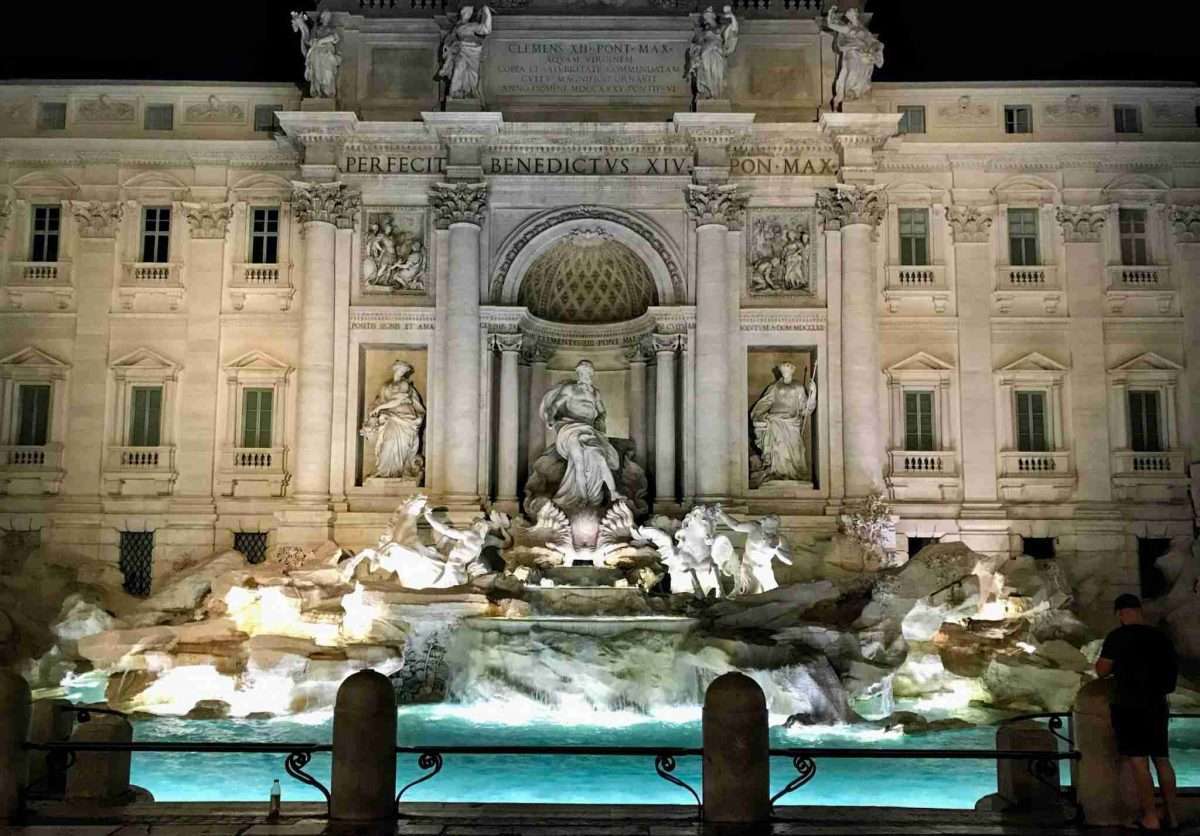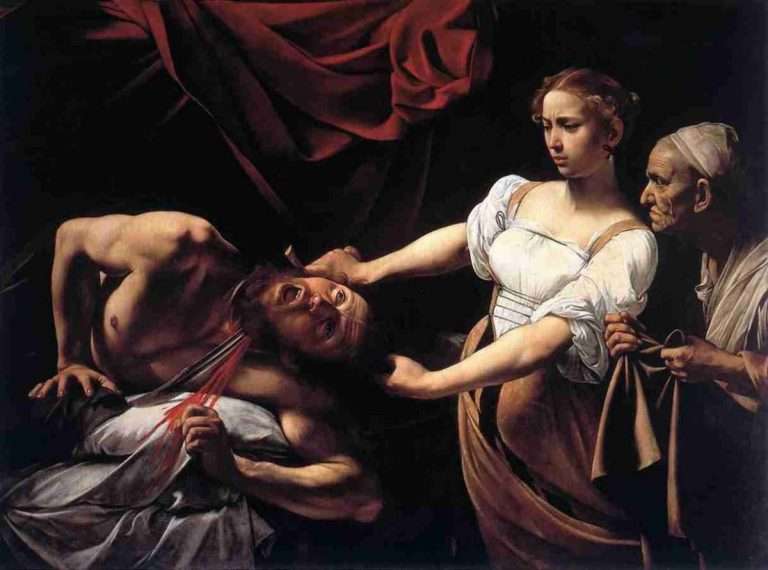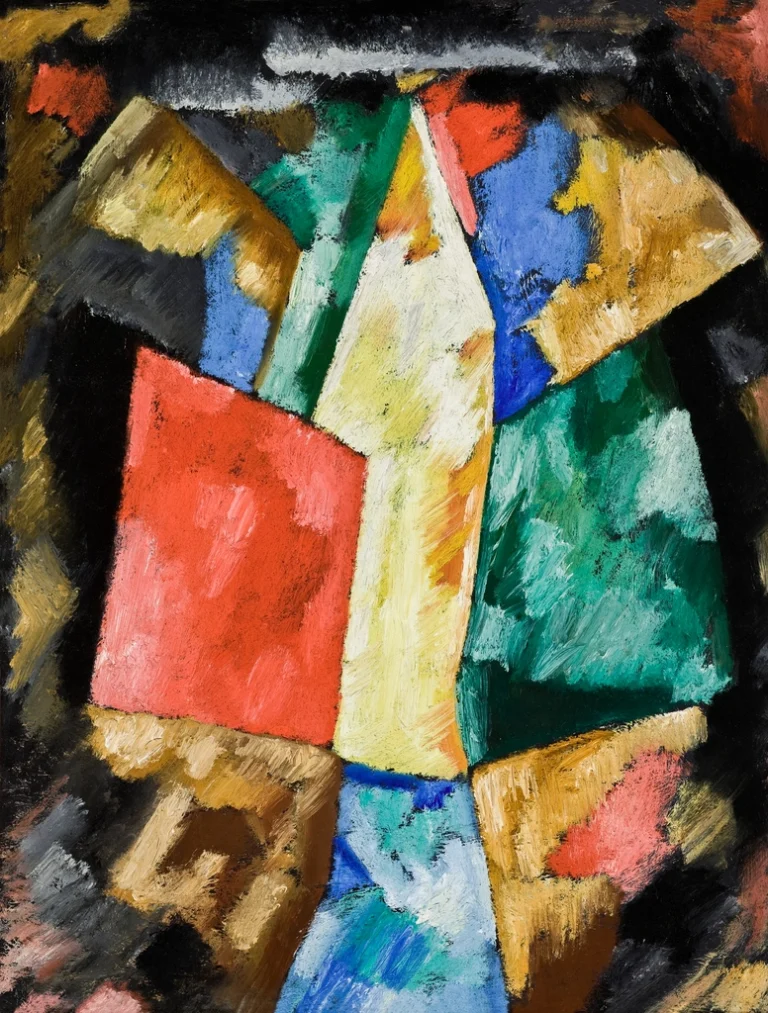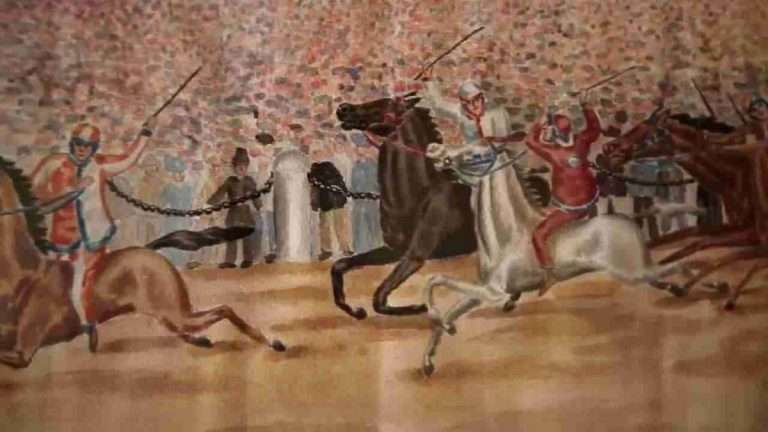
On May 22, 1762, Pope Clement XIII inaugurated what would become one of Rome’s most beloved monuments — the Trevi Fountain.
Construction on the Trevi Fountain had gone on for 30 years, outlasting two popes (Clement XII, who commissioned the work, and Benedict XIV) and chief architect Nicola Salvi, who died in 1751.
Architect Giuseppe Pannini oversaw the final construction of the Trevi Fountain. Meanwhile, sculptors Pietro Bracci, Filippo della Valle, Giovanni Grossi, and Andrea Bergondi contributed the allegorical statues and relief sculptures for the project.
Pietro Bracci sculpted Oceanus, the central deity who commands the dramatic water and travertine scene below him, including trions blowing conch shells and sea-bound horses. The female figures in niches flanking Oceanus represent Health and Abundance and were sculpted by Filippo della Valle. Above each of these statues are bas reliefs that tell the stories of the discovery of the Acqua Vergine and of Marcus Agrippa approving plans for the aqueduct. These were designed by Giovanni Grossi and Andrea Bergondi, respectively.
The Acqua Vergine

The Trevi Fountain is a terminus of the Acqua Vergine (Aqua Virginis), an ancient aqueduct built by Marcus Agrippa in 19 BCE. The aqueduct, which transported water from a pure spring about 8 miles outside the city (in Via Collatina/Salone) was the main source of water for the Baths of Agrippa. These baths were in use for about 600 years, from 25BCE to some time in the 5th century CE.
Only a few ruins remain from the Baths of Agrippa, visible on the Via dell’Arco della Ciambella near the Pantheon. Subterranean ruins related to the Acqua Vergine can be viewed at Vicus Caprarius and, strangely, in the basement of the Rinascente department store.
The Acqua Vergine is also the water source for other famous fountains in Rome, including the Barcaccia Fountain, at the base of the Spanish Steps; the fountains of Piazza Navona; and the Turtle Fountain in the Jewish Quarter, to name just a few.
‘Three Ways,’ Three Coins
Measuring 49.15 meters wide and 26.3 meters tall, the Trevi Fountain is located on the southern facade of the 17th century Palazzo Poli. Three streets, or tre vie, meet at the piazza where the fountain is found. The fountain gets its name from the tre vie.
One of the best-known traditions for visitors to Rome is the tossing of coins into the Trevi Fountain for good luck. Three coins are meant to ensure a return to Rome and the other two are for finding love and keeping love forever.
But the coin toss was not always part of the tradition associated with the Trevi. The tradition was to drink the water.
In Italian Hours, Henry James writes about his visits to Rome in the 1860s and 1870s. The Trevi Fountain was just over 100 years old when James laments, superstitiously, “I didn’t drink of the Fountain of Trevi on the eve of departure the other time; but I feel as if I had drunk of the Tiber itself.” In a later passage, he adds, “fifty swallowed palmfuls of the Fountain of Trevi couldn’t make us more ardently sure that we shall at any cost come back.”
You can still “drink” from the Trevi Fountain. There is a small spout on the right-hand side of the fountain where passersby can fill up their water bottles with potable water.

The tradition of tossing coins specifically into the Trevi Fountain is thought to have been initiated by German archaeologist Wolfgang Helbig, who worked at the German Archeological Institute in Rome from 1887 until 1915.
A scholar and educator, known for his extensive studies of the art of Pompeii and Etruscan civilization, Helbig was also active in Rome’s social scene.
“[Helbig] spent 50 years of his life as a professor and art dealer in Rome. Because he was also married to a rich Russian princess, he also made a name for himself as the host of sophisticated festivities,” explains Der Spiegel.
“At such a festival, it is said, he invented the thing with the coin and the fountain. Or, another way of explaining, to comfort the students who were sad to leave Rome: stand backwards in front of it, close your eyes, throw a coin over your head into the well water. The return to Rome would then be certain. Another coin: You can find a really big love. A third: Love lasts a lifetime.”
Helbig’s “invention” grew in popularity throughout the early part of the 20th century. Then, with the release in 1954 of the Hollywood film “Three Coins in the Fountain,” the tradition was set.
Visitors today don’t always toss three coins, maybe just one. But those coins add up to approximately €1.5 million per year and go to Caritas, a Catholic organization that feeds and cares for Rome’s poor and homeless.
Last updated on May 8th, 2021Post first published on May 22, 2020



![Gabbiano Azzurro Hotel & Suites: Sardinian Style in Golfo Aranci [Review]](https://www.italofile.com/wp-content/uploads/Pool-Terrace-Gabbiano-Azzurro-Sardegna-scaled-768x512.jpg)




